The best smartwatches for health tracking provide a comprehensive suite of health-focused features. The ASUS VivoWatch 6 stays true to that convention, offering all the typical benefits of these devices, and even adds a couple of innovations that mark a genuine effort to stand out in a highly competitive market.
ASUS, named after the mythical winged-horse Pegasus, has released the VivoWatch 6 as an upgrade over its predecessor, the VivoWatch 5. The company is arguably much better known for its excellent laptops than for smartwatches, but it isn't a complete ingenue when it comes to wristwear. One of the first VivoWatch models was the VivoWatch BP, released back in 2018, while the ASUS ZenWatch was announced as far back as 2014.
At first glance, the VivoWatch 6 looks like the sort of smartwatch that might compete with the likes of the Samsung Galaxy Watch range, the Huawei Watch GT 3 Pro, or perhaps even an Apple Watch. But this isn't a full smartwatch. Instead, it offers a few basic smart features, but focuses much more on tracking your health and fitness. This makes it a bit more like a Garmin Forerunner 255, or a Polar Pacer Pro, for example. The question is, does that more singular focus result in a watch worth wearing?
We handed it over to Steven Shaw, our Senior Tech Writer and Reviewer, to test. Having worn more fitness trackers and smartwatches than he cares to remember, did he think the ASUS VivoWatch 6 is worth your money? Read on to find out.
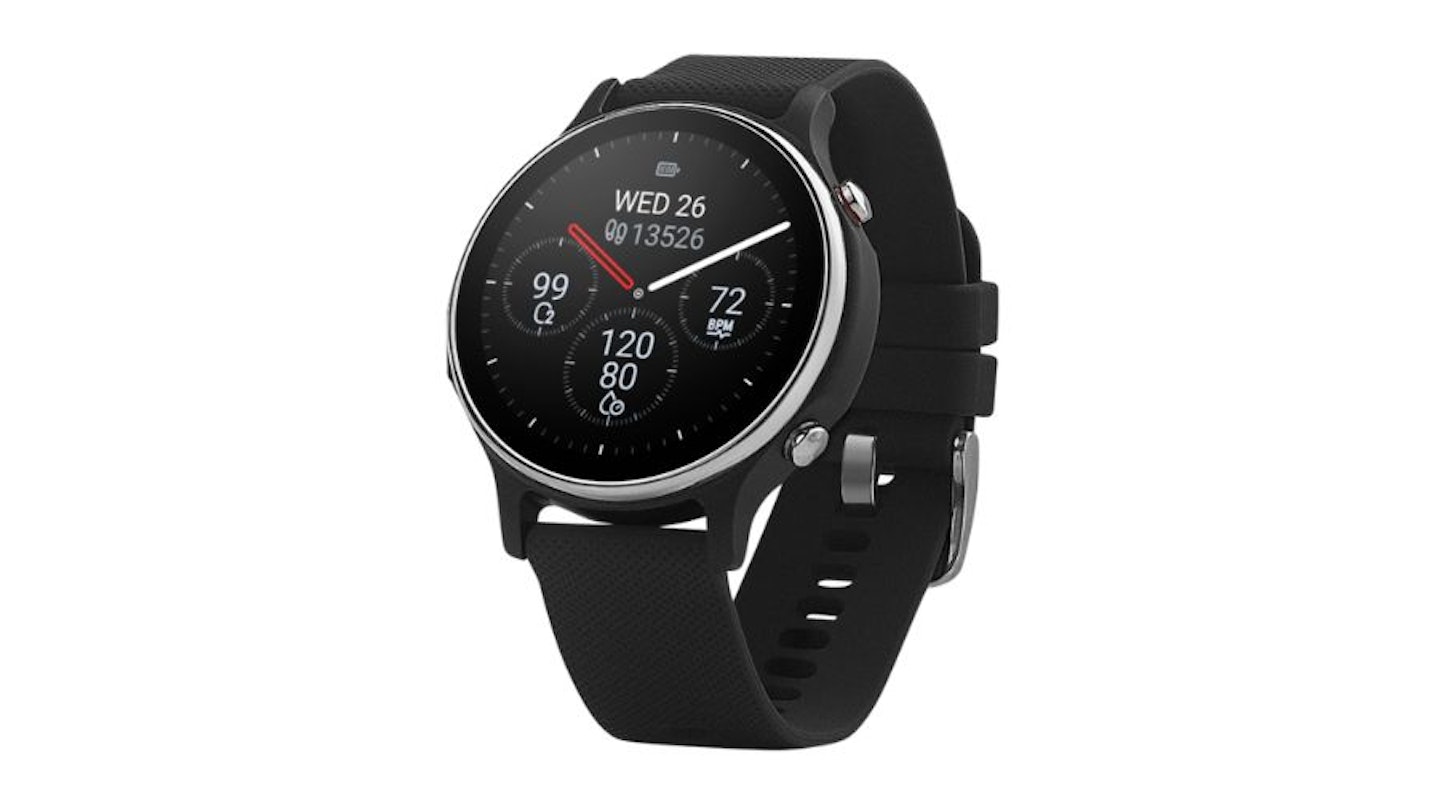 ASUS
ASUSuk.store.asus.com
Pros
- Blood pressure monitoring is rare in fitness trackers
- Easy to use
- App presents data clearly
Cons
- Questionable accuracy with some tracking features
- Limited feature set for the price
| Display | 1.39-inch AMOLED |
| Battery Life | Up to 9 days |
| GPS | Dual-Band GPS |
| Water Resistance | 5 ATM |
| Compatibility | Android and iOS |
| Dimensions | 46 x 14 x 270 mm |
| Weight | 60 grams |
Finger on the pulse
Setup and design
Like most smartwatches, setup was very straightforward. Simply scan a QR code to download the app. Next, pair the phone with the watch, create an account, and then in my case, perform a software update, which took around 20 minutes.
Design-wise, it's a simple watch, with two buttons. One acts like a back button, and the other is a shortcut that you can set to perform a specific function of your choice. The AMOLED display is bright and clear (although perhaps a little dull in very bright sunlight), and the touchscreen was responsive. It's an easy watch to read, and if you like something simple, this is far easier to navigate than some Polar or Garmin watches, many of which have five buttons plus a touchscreen.
The strap is a comfortable medical-grade silicone, which didn't cause any irritation while I was wearing it. There's nothing here that offends, but similarly, there's nothing that really makes it stand out – with one exception. The sensor on the side of the watch is something very unusual.
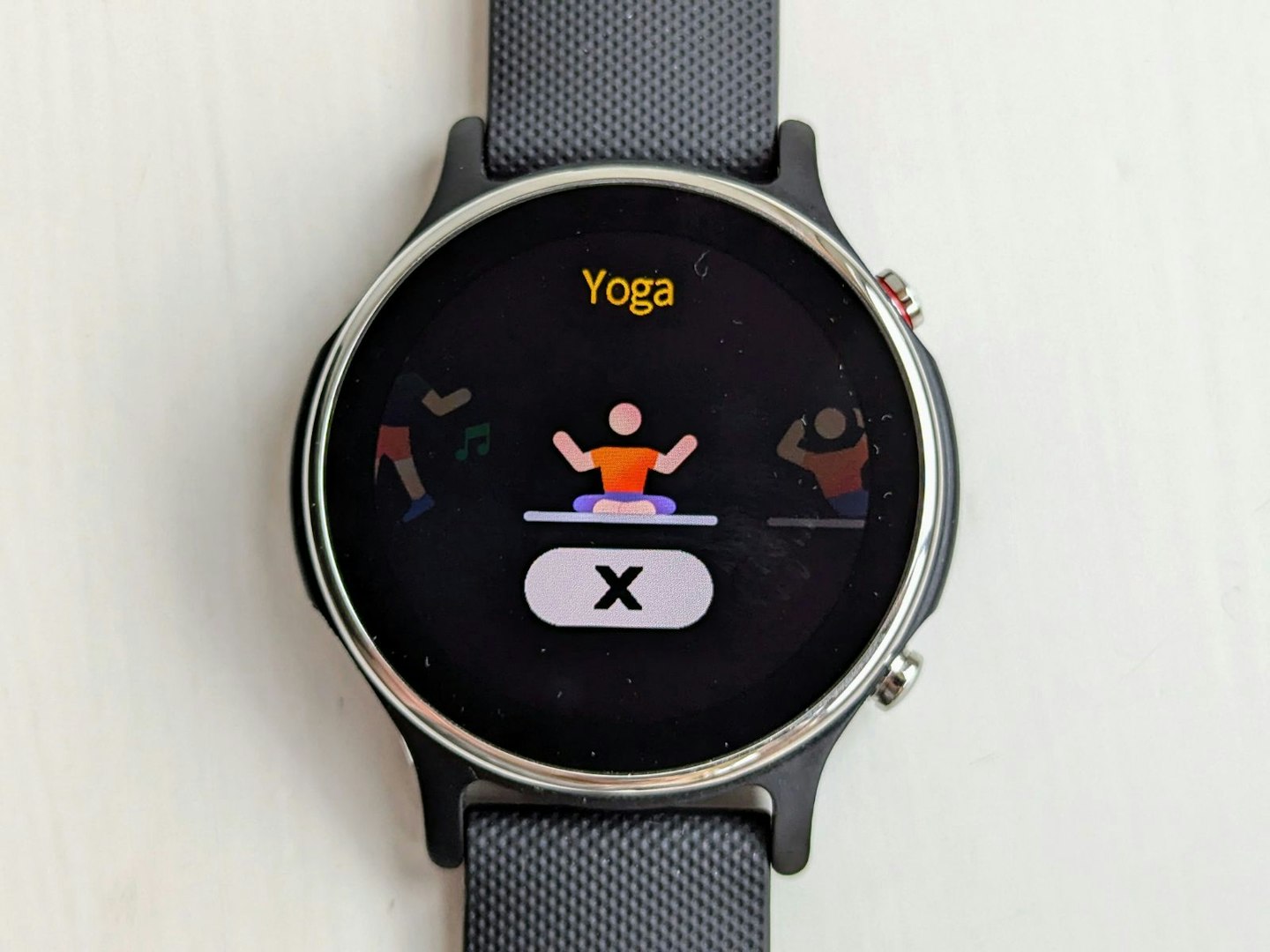
Blood pressure and body composition
There is something of an arms race among manufacturers of wearable devices, and arguably more so among smaller brands in the marketplace. Like a rainforest sapling straining to find a shaft of light before being crowded out by bigger competitors, these companies are often the ones that try to innovate far more than the giants that surround them.
This watch has all the usual metrics I'd expect to find: heart rate, sleep, steps, calories, blood oxygen and temperature tracking are all available. There's also activity tracking for several popular activity types, including running, walking, yoga, swimming and cycling. Dual-frequency GPS means you can also track outdoor exercise without needing to take your phone with you.
But the big pitch on the VivoWatch 6 is its ability to measure ECG, body composition and blood pressure through your fingertip. To be clear, ECG is a common measurement on smartwatches (albeit usually done via your wrist). Body composition and blood pressure are much rarer – although they are offered by recent Samsung Galaxy Watch models. The difference here is that ASUS provides dual sensors. One, as usual, is found on the underside of the watch and measure blood vessels in your wrist. The other has sensor modules on the left and front of the watch which monitor the capillaries in your fingertips. ASUS claims that dual sensors are "at least" 10 per cent more accurate than a single optical sensor.

To take one of these readings is simple enough – place your finger and thumb on the designated parts of the watch, and after a few seconds, you'll get the relevant reading. Personally, I found this to be a slightly fiddlier process than I'd hoped. It typically took a few goes before a reading would register, and the watch would give me messages like "keep still" to try and ensure a reading was successfully taken.
It's also important to note that blood pressure readings are based on something called Pulse Transit Time. You'll also need a standard blood pressure cuff to calibrate your readings. I did wonder why, if you already have a blood pressure cuff, would you then want to rely on a watch for readings? I think the main thing is you will get regular readings from the watch without any hassle. I found the readings to be generally in line with the cuff I used for calibration.
Body composition comparison
Body composition was a different story. I've used a lot of smart scales over the years, and while none of them is perfect, they do provide a reasonable ballpark figure to work from. When I tested the VivoWatch 6, it suggested I had a body fat percentage of almost 25 per cent (which according to Nuffield Health, places me firmly in the "above average" category, and potentially flirting with being "high" and putting my health at risk). This is significantly higher than the readings I get from my Withings BodyScan smart scales, and, frankly, not credible.
The problem with getting any reading that is clearly inaccurate is that it calls into question the accuracy of any other readings from the watch. While I applaud ASUS for trying to add something extra compared to what most of its rivals offer, the lack of accuracy is a problem.
The one mitigating factor is that individual readings seldom tell the whole story, and it's more important to track trends over several weeks or months. A consistent downward trend might be a true reflection of a reduction in body fat, even if the specific numbers aren't quite right.
Overall performance
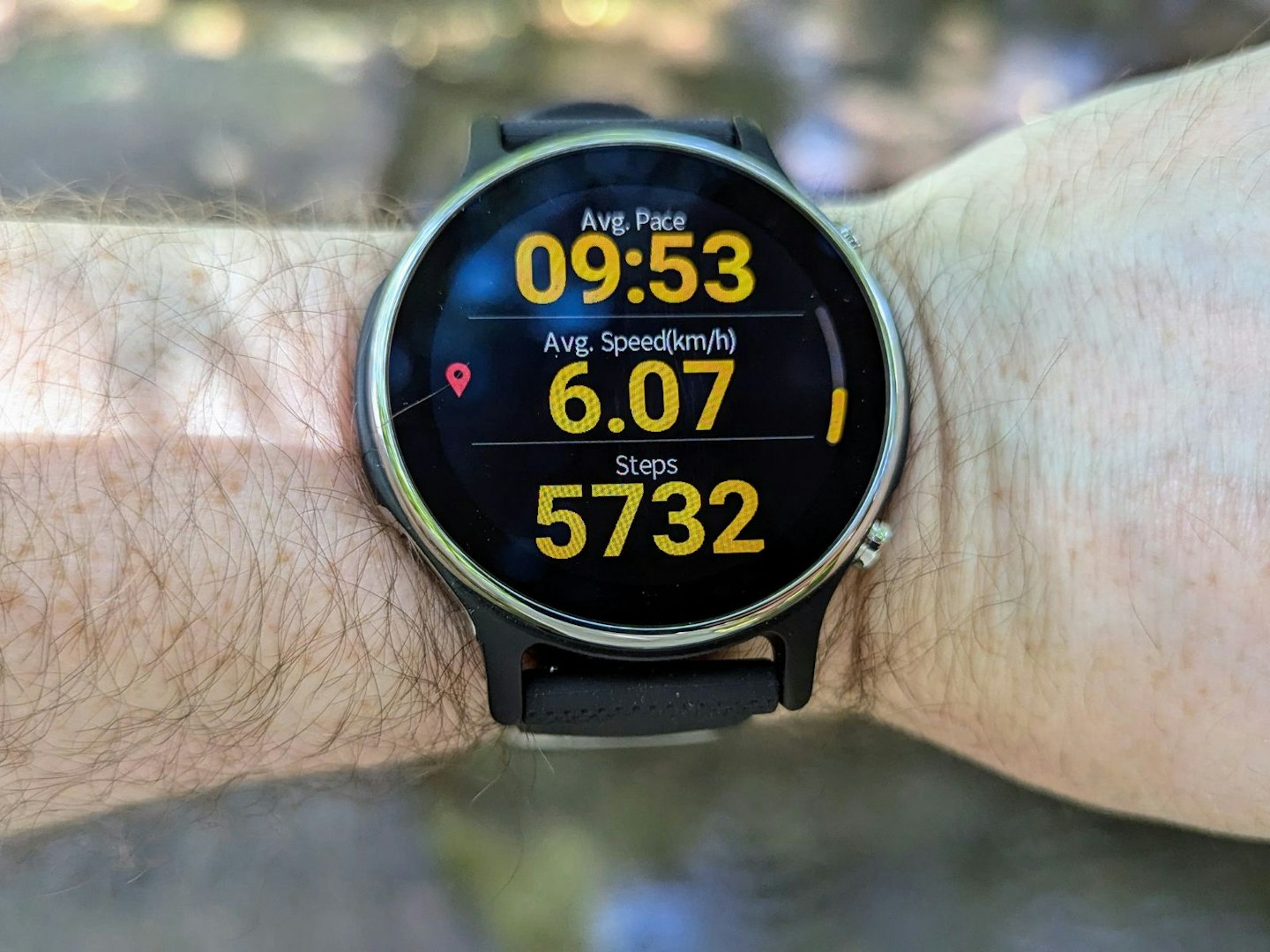
Body composition and blood pressure aren't the only things you can track with the VivoWatch 6. As I mentioned earlier, this watch tracks all the usual health and fitness metrics I'd expect. I was wearing it along with a Garmin Forerunner 255, which I have found to be a reliable tracker for most metrics. So how does the ASUS device compare?
In terms of general activity tracking, step counts on the VivoWatch 6 were significantly lower than on the Garmin watch. Over the course of the testing period, the VivoWatch 6 gave me an average of 10752 steps per day. The Garmin told me I was doing an average of over 15000 steps each day. That's an enormous discrepancy between the two devices, and I would tend towards the Garmin as being a more accurate reflection of how many steps I'd done.
Sleeping on the job

Sleep tracking was similarly erratic. I've yet to find the fitness tracker or smartwatch that perfectly captures my sleep. But it's fair to say that the readings on this felt much less accurate than usual.
On some nights, the VivoWatch 6 and the Forerunner 255 matched very closely in terms of sleep duration. On others, the ASUS device thought I'd slept for more than two hours longer than the Garmin. It's hard to explain such a large discrepancy. There were also problems with tracking the data. On several occasions, the VivoWatch failed to detect times when I was awake, and – slightly alarmingly – didn't detect a heart rate at all during the night. There were also nights when it suggested I had no REM sleep at any point.
It's difficult to know exactly how well I slept, because, well, I was asleep. But it seems unlikely that I had no REM sleep, especially when it was telling me I had slept for almost nine hours. And no other fitness tracker I have ever tested before has given me this sort of reading. As with the body composition readings, it makes it difficult to believe that this was giving me accurate data.
Erratic exercise tracking
Without wanting to sound like a stuck record, exercise tracking also felt inconsistent. When I was doing a gentle stretching workout, it would massively overestimate my heart rate compared to the Garmin. But when doing high-intensity cardio, it would do the opposite, and suggested my heart rate was considerably lower than the Forerunner 255 was recording. In both examples, my level of perceived exertion was much more in-line with the Garmin device.
Happily, GPS tracking was reasonably accurate, and with one exception, the two watches were within 10 metres of each other when completing my usual 5.5-km route. In this regard, at least, the VivoWatch 6 seemed to hold its own.
Any downsides?
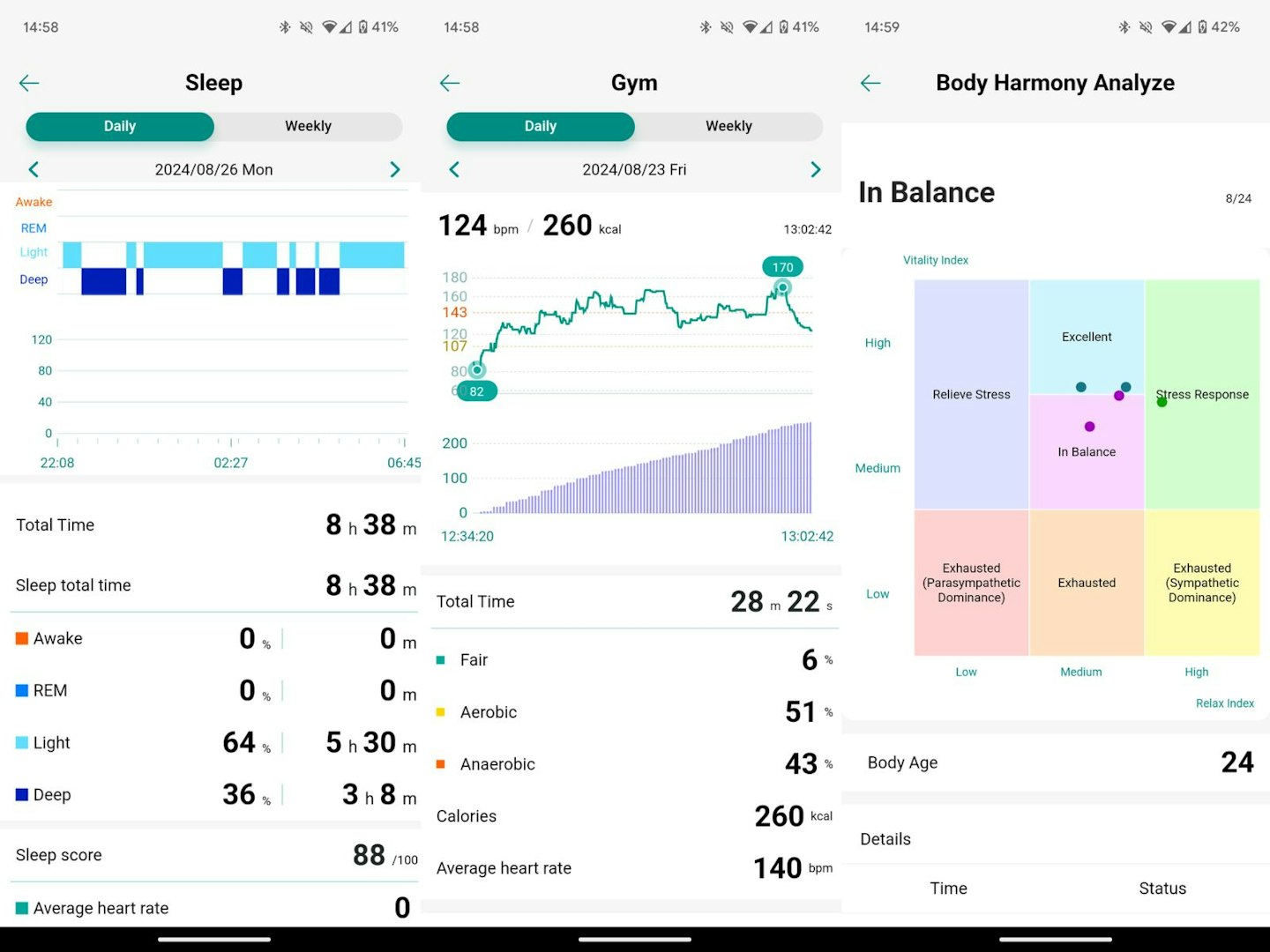
As well as the aforementioned issues with accuracy, I was also slightly disappointed by the ASUS Health Connect app. This is where you go to track all your data and get a few added insights. The app is simple enough to use and navigate, and the data it captures is presented clearly. You can also access extra information to explain what the data means if you aren't sure.
But overall, it's a thin app, which offers limited insights compared to the best apps on the market. The Health AI tool, which promises personalised health tips after you've worn the watch for seven days consecutively, felt quite superficial. The advice I got amounted to little more than "get more sleep" and "do more steps" - I certainly didn't need AI to tell me that.
Battery life
ASUS claims that the VivoWatch 6 will last for up to nine days between charges. I found that with the screen brightness on 3 for most of the time, and tracking a workout or walk each day, I was struggling to go longer than six days.
Six days is probably still fine for most people, and it can charge from flat to full in around 90 minutes. But this was still significantly short of what is claimed by the manufacturer.
Price and competition
The ASUS VivoWatch 6 has an RRP of £339.99. This sits between the Apple Watch Series 9 (RRP from £399) and the Apple Watch SE (RRP from £219), and slightly more expensive than the Samsung Galaxy Watch 7 (RRP £289). These are all fully-fledged smartwatches, which offer plenty of health and fitness tracking tools, plus all the apps and other functions of a true smartwatch.
In comparison, the VivoWatch 6 gives you a few basic tools such as notifications, remote camera control, music control, a few clock functions, and a medication reminder. These are like what you'd find on some of the best fitness trackers under £50, such as the Xiaomi Mi Smart Band 9.
Given that this is not a true smartwatch, this is a price tag that puts it in competition with premium devices from Apple and Samsung, and some of the best Garmin watches to boot. The lack of functionality compared to those devices makes this something of a hard sell. Older devices such as the Garmin Forerunner 255 (often available for under £250) or the Polar Pacer Pro (often on sale for under £200) offer better performance and value.
Who is it for?
I mentioned before how competitive the fitness tracker market is. This watch is suitable for anyone who wants to track their fitness, but given the plethora of choices available, most people will find a better alternative out there. There is, however, one specific subset of people who I feel could really benefit from this device.
Blood pressure tracking isn't common on smartwatches and fitness trackers, with Samsung the only other major brand I've seen offering it. And with Samsung, the feature is only available if you also have a Samsung phone. That's not the case with the ASUS VivoWatch 6, which is compatible with Android and iOS devices.
In other words, if you're a non-Samsung phone owner who wants to regularly track your blood pressure, this could be the best alternative currently available. While I'd always advocate using a cuff or getting your healthcare professional to check your blood pressure, this watch could be a useful way to routinely monitor and spot potential problems, alongside regular check-ups.
Would we recommend it?
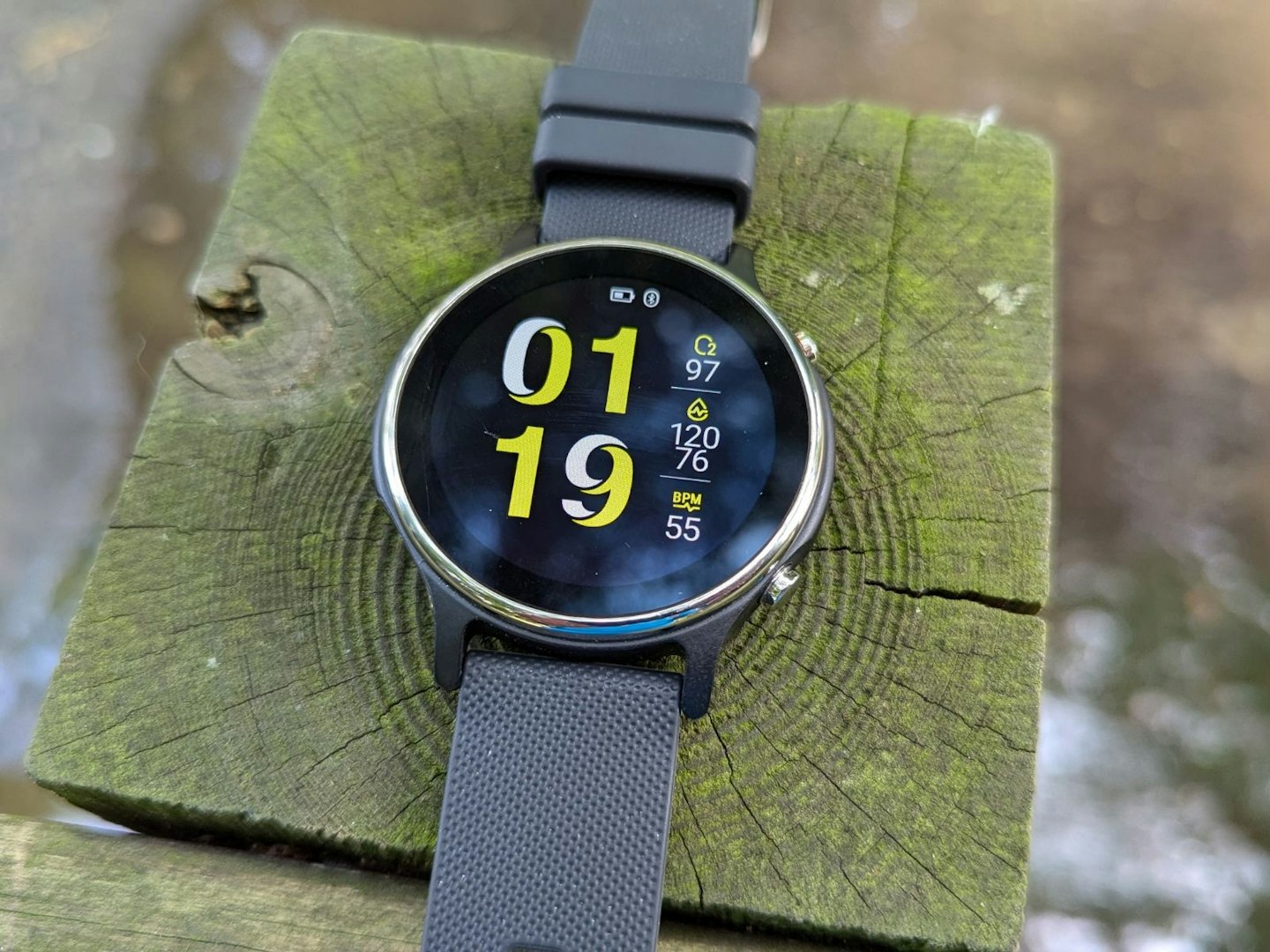
For most people, I struggle to recommend this product. There are simply too many issues with consistency and accuracy for me to feel this would be a better choice than one of the myriad alternatives out there. That's even more the case when considering the relatively high price tag.
The screen is fine, battery life is fine, the app is...you get the idea. But there's little here that stands out to make this a better choice than a Garmin, an Apple Watch or even a far less expensive fitness tracker such as the Fitbit Charge 6. The features that could make this stand out – body composition and blood pressure, aren't enough to overcome its failings in other areas (and body composition readings didn't feel very accurate anyway). I applaud ASUS for trying to innovate. But for me, it doesn't do enough, well enough, to make this an easy recommendation.
All that being said, I refer to my earlier point: if you're a non-Samsung phone owner who wants to monitor their blood pressure on your wrist, the ASUS VivoWatch 6 is arguably the best – or possibly only – option out there. And in that respect at least, this felt like a device that can do the job.
More items to consider
 Steven Shaw/What's The Best
Steven Shaw/What's The BestA slightly older model, the Forerunner 255 still provides plenty of health and fitness tracking metrics and is ideal for anyone who wants in-depth insights without spending a fortune.
 Fitbit
FitbitThe Fitbit Charge 6 is Fitbit's newest and most feature-rich fitness tracker. An upgraded PPG sensor means heart-rate tracking is more accurate than ever before, and it costs significantly less than the VivoWatch 6.
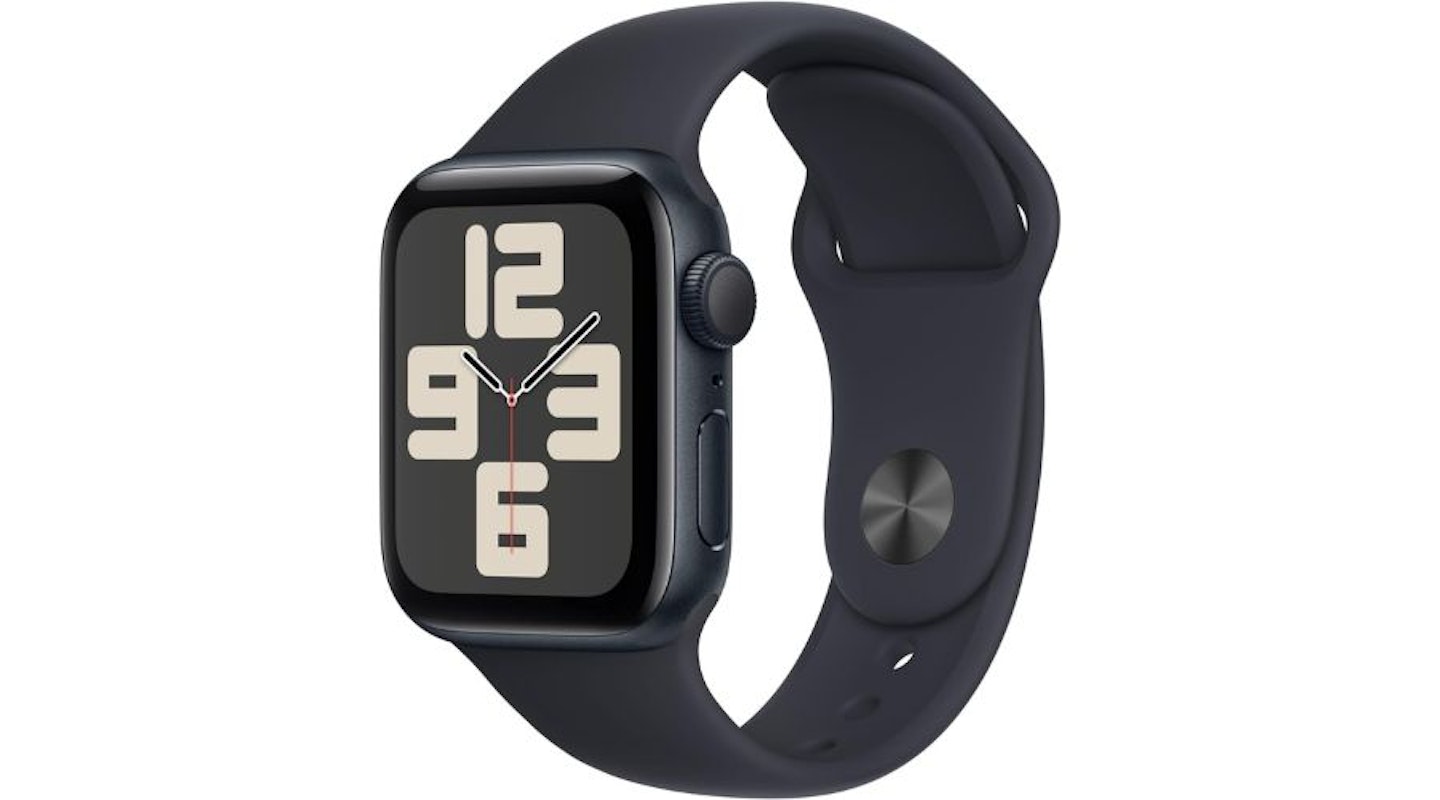 Apple
AppleFor a true smartwatch experience the Apple Watch SE is a great option – as long as you are an iPhone user. It offers an incredibly polished experience, and a comprehensive suite of health and fitness tracking tools. Battery life is a bit of a drawback though, as you'll almost certainly need to charge this daily.
Who tested it?
Senior Tech Writer and Reviewer Steven Shaw was given the task of reviewing this product, thanks to his love of health and fitness.
Steven has years of experience working with smartwatches and fitness trackers and has written about them extensively for several different publications.
How the product was tested
Steven wore the ASUS VivoWatch 6 as his primary watch for a couple of weeks. This gave him plenty of time to record data, such as step counts, calories burned, sleep, and exercise. It also allowed him to see how comfortable the strap was when being worn for extended periods. On his other wrist Steven wore a Garmin Forerunner 255 so that he could compare the data between the two watches. This allowed him to build up a picture of the accuracy and consistency of the VivoWatch 6.
Steven also regularly used the ASUS HealthConnect app to see how well the data was presented, what additional support was available, and whether it offered any extra insights.
Why should you trust us?
At What's The Best, our mission is to provide accurate and reliable reviews, ensuring our readers receive honest and transparent information about the best technology products available. Anything less would undermine our commitment to being a trusted source of unbiased product information.
Our dedicated in-house writing team comprises experts with extensive experience and a genuine passion for technology. Collectively, we have spent decades testing and writing about tech, leveraging our expertise in all our articles, advice pieces and reviews.
We maintain complete editorial independence and do not accept payment for product reviews. Our writers have full control over their content, ensuring that products are selected based solely on the needs of our readers. While we may earn commissions or other compensation from links on our website, this never affects our product choices. These links enable us to continue offering valuable consumer advice, without compromising the integrity of our reviews.
How we test products at What's The Best
At What's The Best, we ditch the gimmicks and deliver sweat-tested reviews for real fitness enthusiasts. Our team of experienced athletes puts the latest wearables and equipment through their paces in real-world workouts, from running trails to home gyms. We don't just read specs – we use products as they are intended and push our PRs so you know what truly performs.
The result? Unbiased buying advice that gets you moving. We only review the most significant and relevant fitness tech and equipment on the market, saving you time and frustration. Can't find a review for your specific fitness goal? We're constantly adding new products to our ever-growing library, so stay tuned.
Ready to level up your workout with trusted advice? Visit our dedicated page on fitness tech and equipment reviews.
Steven Shaw is a Senior Tech Writer and Reviewer for What's the Best. Steven writes how-to guides, explainers, reviews and best-of listicles covering a wide range of topics. He has several years of experience writing about fitness tech, mobile phones, and gaming.
When Steven isn't writing, he's probably testing a new smartwatch or fitness tracker, putting it through its paces with a variety of strength training, HIIT, or yoga. He also loves putting on a podcast and going for a long walk.
